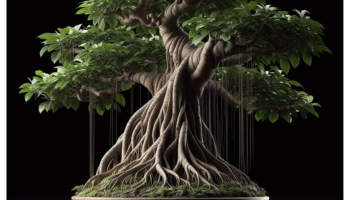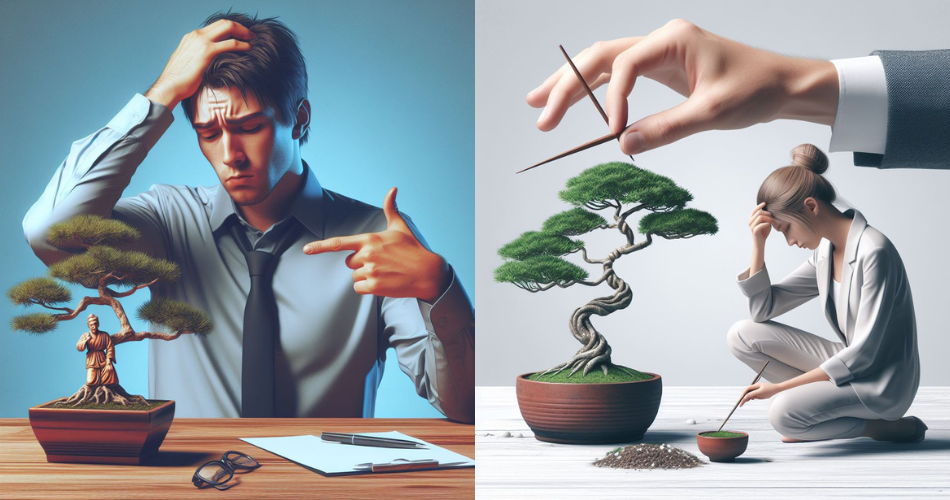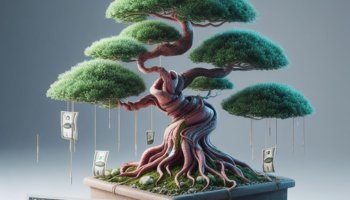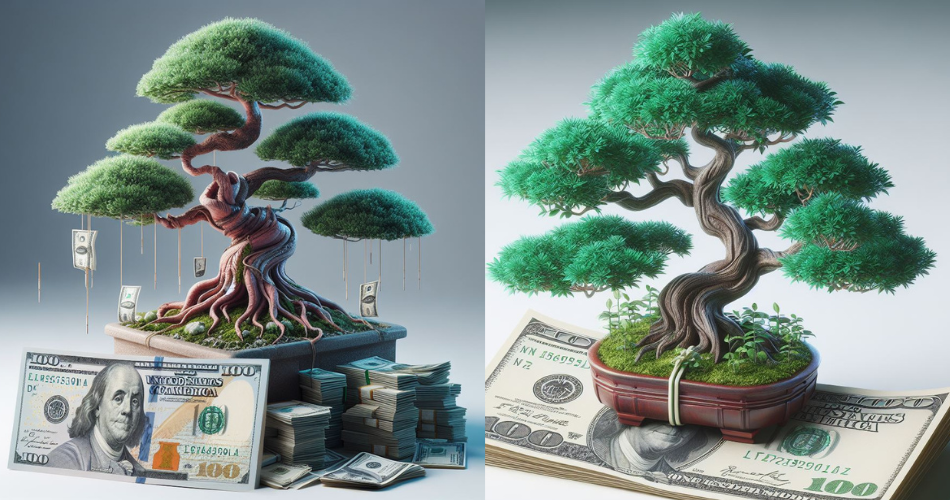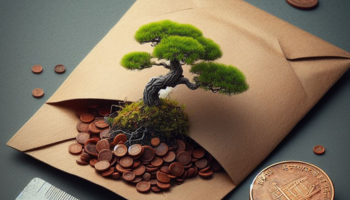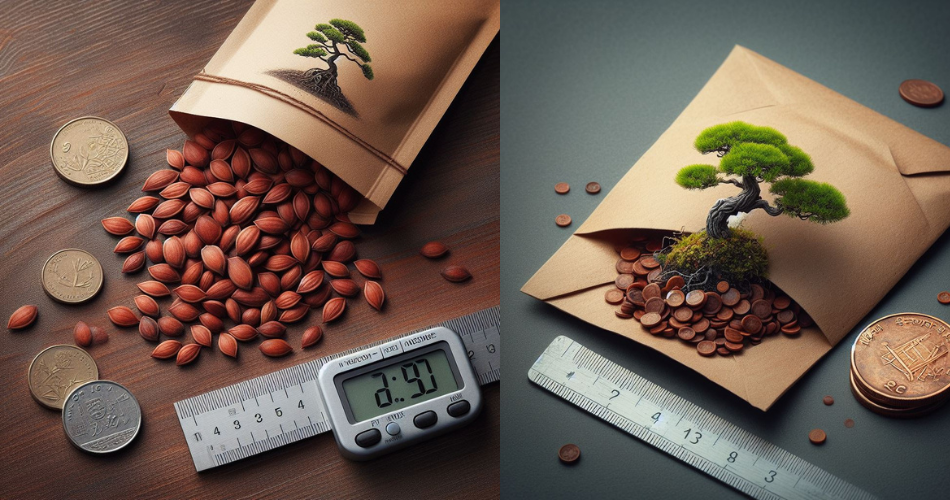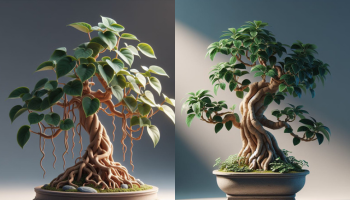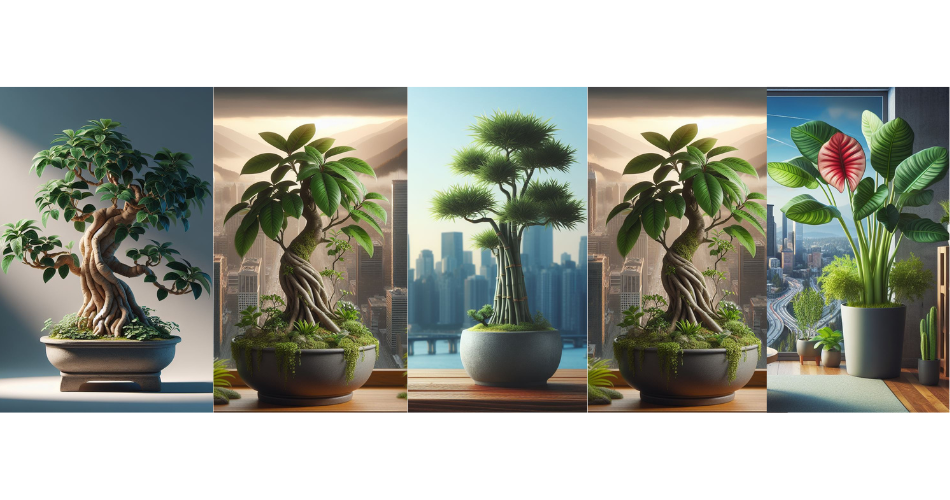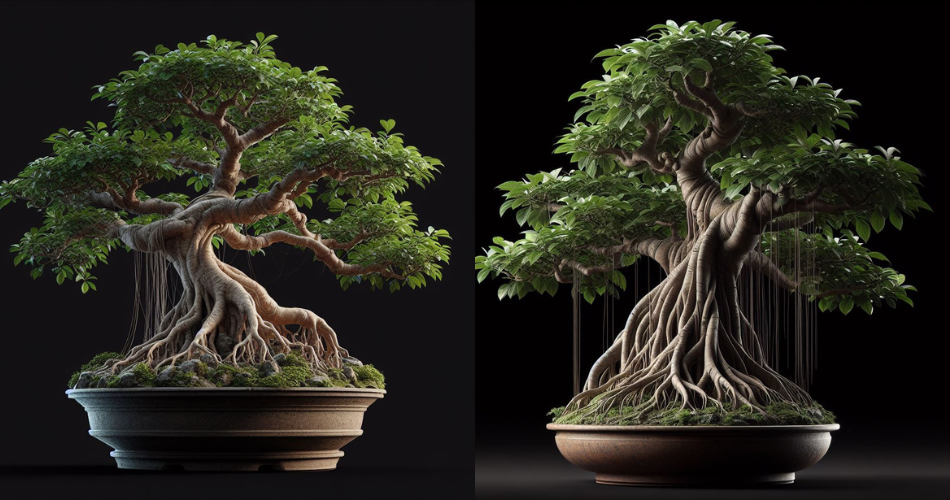
Bonsai, the ancient Japanese art of cultivating miniature trees, has captivated enthusiasts around the world for centuries. The meticulous care and attention to detail required in creating and maintaining bonsai trees make it a rewarding and meditative practice. In this article, we will explore the fascinating world of bonsai, focusing specifically on the process of making a unique bonsai from a banyan tree in the comfort of your own home. From understanding the characteristics of banyan trees to selecting the right specimen, preparing the necessary tools and materials, and mastering the techniques of pruning and shaping, we will guide you through the step-by-step process of creating a stunning banyan tree bonsai. So, let’s embark on this journey, unraveling the secrets of bonsai and discovering the art of transforming a banyan tree into a living masterpiece.
Understanding the Art and Importance of Bonsai Trees
So you’ve probably seen those cute little trees that look like they’ve been miniaturized, right? Well, those are bonsai trees! Bonsai is an ancient Japanese art form that involves growing and shaping trees in small containers, making them look like miniature versions of their full-sized counterparts. It’s like having a tiny tree that fits perfectly on your windowsill.
The Significance of Bonsai in Culture and Tradition
Bonsai trees have a rich cultural and traditional importance. In Japanese culture, bonsai is seen as a symbol of harmony, balance, and patience. It’s a way of connecting with nature on a smaller scale and appreciating the beauty of the natural world. Plus, they make for great conversation starters! Imagine inviting your friends over and impressing them with your bonsai skills. It’s like having a living work of art in your home.
2. Banyan Tree: Characteristics and Suitability for Bonsai Cultivation
Overview of Banyan Trees
Now, let’s talk about the star of our bonsai show – the banyan tree! Banyan trees are known for their wide, sprawling canopies and aerial roots that give them a unique appearance. They are native to tropical regions and are commonly found in countries like India and Southeast Asia. These trees have a majestic presence and can add a touch of grandeur to your bonsai collection.
Advantages and Disadvantages of Using Banyan Trees for Bonsai
Using banyan trees for bonsai has both its pros and cons. On the positive side, banyan trees have strong and flexible branches, which makes them great for shaping and styling. They also have a thick trunk, which adds to the overall aesthetic appeal of a bonsai tree. However, banyan trees do require more maintenance compared to other bonsai varieties. They need regular pruning to maintain their shape and prevent the aerial roots from getting out of control. So, if you’re up for the challenge, a banyan bonsai can be a rewarding and stunning addition to your collection.
3. Selecting the Right Banyan Tree for Bonsai: Factors to Consider
Criteria for Choosing Banyan Trees
When selecting a banyan tree for bonsai, there are a few key factors to consider. First, choose a tree that has a thick and sturdy trunk, as this will give your bonsai a sense of maturity and strength. Look for a tree with well-developed branches that can be easily shaped and wired. It’s also important to consider the overall health of the tree, as you want to start with a healthy foundation for your bonsai journey.
Types and Varieties of Banyan Trees Suitable for Bonsai
There are several different types and varieties of banyan trees that are suitable for bonsai cultivation. Some popular choices include the Indian banyan (Ficus benghalensis), the strangler fig (Ficus aurea), and the sacred fig (Ficus religiosa). Each variety has its unique characteristics and growth habits, so make sure to do your research and choose the one that aligns with your vision for your bonsai masterpiece.
4. Steps to Prepare and Set Up Your Bonsai: Tools, Soil, and Container Selection
Essential Tools for Bonsai Making
Now let’s get our hands dirty and dive into the practical aspects of bonsai making! You’ll need a few essential tools to get started. These include sharp pruning shears for trimming branches and roots, bonsai wire for shaping and training, concave cutters for removing larger branches, and a root rake for gently loosening the soil around the roots. Having the right tools will make your bonsai journey a whole lot easier and more enjoyable.
Choosing the Right Soil Composition
The soil composition for your banyan bonsai is crucial for its overall health and growth. Bonsai soil should have good drainage while retaining enough moisture for the tree. Consider using a mixture of organic materials like compost or peat moss, inorganic components like perlite or pumice, and a bit of coarse sand to create a well-draining yet moisture-retaining soil blend. Remember, happy roots equal a happy bonsai!
Selecting an Appropriate Container for Your Banyan Tree Bonsai
Last but not least, let’s talk about the container for your banyan bonsai. The container you choose should complement the overall aesthetic of your bonsai and provide enough space for root growth. Look for containers made from durable materials like ceramic or plastic, with drainage holes to prevent waterlogging. And don’t forget to consider the size of your banyan tree when selecting the container. You want your bonsai to have room to grow, but not too much space that it looks lost in its surroundings.
So there you have it, a beginner’s guide to making a bonsai out of a banyan tree at home. Remember to have fun with the process and let your creativity flow. With a little patience and care, you’ll have your very own mini masterpiece in no time! Happy bonsai-ing!5. Pruning and Shaping Techniques: Creating the Desired Bonsai Form
Understanding Pruning Principles for Bonsai Trees
Pruning is a key technique in shaping your Banyan Tree Bonsai and achieving the desired form. When it comes to bonsai, less is more. Pruning involves removing excess foliage and branches to maintain the tree’s miniature size and create a balanced shape. Start by identifying any branches that are growing too tall or crossing each other, and carefully trim them to maintain a harmonious appearance. Remember, pruning should be done gradually over time to avoid stressing the tree.
Shaping Strategies: Wiring, Clipping, and Branch Manipulation
To further shape your Banyan Tree Bonsai, you can employ various techniques like wiring, clipping, and branch manipulation. Wiring involves wrapping a thin wire around the branches to guide their growth in a specific direction. Be sure to use aluminum wire, as it is flexible yet sturdy enough to hold the branches in place. Additionally, clipping can be used to refine the shape of your bonsai by snipping off small portions of foliage or branches. Lastly, branch manipulation entails gently bending or wiring branches to create interesting twists and turns. Mastering these shaping strategies will allow you to bring out the unique character of your Banyan Tree Bonsai.
6. Bonsai Care: Watering, Fertilizing, and Providing the Ideal Growing Conditions
Proper Watering Techniques for Banyan Tree Bonsai
Watering your Banyan Tree Bonsai properly is crucial for its health and growth. As a general rule, water your bonsai thoroughly but infrequently. Allow the soil to slightly dry out between waterings to prevent overwatering, which can lead to root rot. When watering, make sure to soak the entire root ball and allow the excess water to drain out completely. Remember, consistent moisture is essential, so monitor the moisture level of the soil regularly.
Fertilizer Application and Nutritional Requirements
Just like any other plant, bonsai trees require proper nutrition to thrive. Fertilizing your Banyan Tree Bonsai is essential for providing it with the necessary nutrients. Use a balanced, slow-release fertilizer formulated specifically for bonsai trees. During the growing season, fertilize your bonsai every two to four weeks to support healthy growth. However, always follow the instructions on the fertilizer packaging to avoid over-fertilization.
Creating an Optimal Growing Environment: Light, Temperature, and Humidity
Finding the ideal growing conditions for your Banyan Tree Bonsai is crucial for its overall health. These trees thrive in bright, indirect sunlight, so place your bonsai near a window where it can receive ample light. However, be cautious of direct sunlight, as it can scorch the delicate foliage. Temperature-wise, Banyan Tree Bonsai can tolerate a wide range, but they prefer warmer temperatures between 60-80°F (15-27°C). Lastly, maintaining a moderate level of humidity is essential. Consider using a humidity tray or placing your bonsai near a humidifier to keep the air moist.
7. Common Issues and Troubleshooting: Dealing with Pests, Diseases, and Other Challenges
Identifying and Treating Common Bonsai Pests
Despite your best efforts, pests can sometimes find their way to your Banyan Tree Bonsai. Common bonsai pests include aphids, scales, and spider mites. Keep a close eye on your bonsai and check for any signs of infestation, such as yellowing leaves or sticky residue. If you spot any pests, promptly treat your bonsai with an appropriate insecticide or natural pest control methods like neem oil. Regularly inspect your bonsai to prevent any major pest problems.
Preventing and Managing Diseases in Banyan Tree Bonsai
Diseases can also affect your Banyan Tree Bonsai, but with proper care, you can minimize the risk. Overwatering, poor air circulation, and excessive humidity can lead to fungal diseases like root rot or powdery mildew. To prevent diseases, ensure proper watering practices and adequate airflow around your bonsai. If you notice any signs of disease, such as discolored or wilting leaves, take immediate action by adjusting watering practices or using appropriate fungicides.
Troubleshooting Techniques for Common Bonsai Challenges
Sometimes, despite your best efforts, your Banyan Tree Bonsai may encounter challenges. Common issues include leaf drop, yellowing foliage, or stunted growth. To troubleshoot these problems, evaluate the watering, lighting, and fertilizing routines. Adjusting these factors can often resolve common bonsai issues. Additionally, seek advice from experienced bonsai enthusiasts or join a bonsai club to gain insights and solutions to specific challenges.
8. Patience and Mastery: Nurturing Your Banyan Tree Bonsai over Time
Nurturing a Banyan Tree Bonsai is a long-term commitment that requires patience and mastery. Bonsai trees are living works of art that continue to evolve over time. As you care for your bonsai and learn more about its needs, you’ll gain a deeper appreciation for the art of bonsai. Enjoy the journey of nurturing your Banyan Tree Bonsai and watch as it grows and develops into a unique and stunning miniature tree. Remember, bonsai is an art form, so embrace the imperfections and let your personality shine through in the way you care for and style your bonsai. Happy bonsai growing!
In conclusion, creating a bonsai from a banyan tree at home is a fulfilling and rewarding endeavor. By following the steps outlined in this article, you can embark on a journey of artistry and patience, nurturing your banyan tree bonsai into a living work of art. Remember to provide the proper care, attention, and maintenance required to ensure the long-term health and beauty of your bonsai. With dedication and practice, you can master the techniques of bonsai cultivation and experience the joy of watching your banyan tree bonsai thrive and evolve over time. So, get started on this enchanting horticultural adventure and enjoy the timeless beauty and serenity that bonsai brings.
FAQ
1. Can I make a bonsai from any type of banyan tree?
While it is possible to make a bonsai from various types of banyan trees, certain species are more suitable than others. Look for banyan trees with smaller leaves and flexible branches, as they are easier to shape and maintain as bonsai. Research and consult with experts or local nurseries to find the best banyan tree species for bonsai cultivation.
2. How long does it take for a banyan tree bonsai to mature?
Patience is key when it comes to bonsai cultivation. The time it takes for a banyan tree bonsai to mature can vary widely depending on factors such as the age of the tree when you start, the techniques employed, and the overall care provided. It can take several years or even decades for a banyan tree bonsai to reach its full potential, but the journey of nurturing and shaping the tree is part of the beauty and enjoyment of bonsai.
3. Is bonsai difficult to maintain?
Maintaining a bonsai, including a banyan tree bonsai, requires regular care and attention. It involves tasks such as watering, pruning, fertilizing, and monitoring for pests and diseases. However, with proper knowledge, techniques, and a consistent routine, bonsai maintenance can become a rewarding and therapeutic practice. It is important to learn about the specific care requirements of your banyan tree bonsai, including its unique needs for light, temperature, and humidity.
4. Can I display my banyan tree bonsai indoors?
While banyan tree bonsai can be temporarily displayed indoors for short periods, it is generally recommended to keep them outdoors. Bonsai trees thrive in natural light and outdoor conditions, which are essential for their growth and health. If you do choose to display your banyan tree bonsai indoors, make sure to provide it with adequate light and proper environmental conditions to prevent it from weakening or experiencing issues related to lack of sunlight and air circulation.

